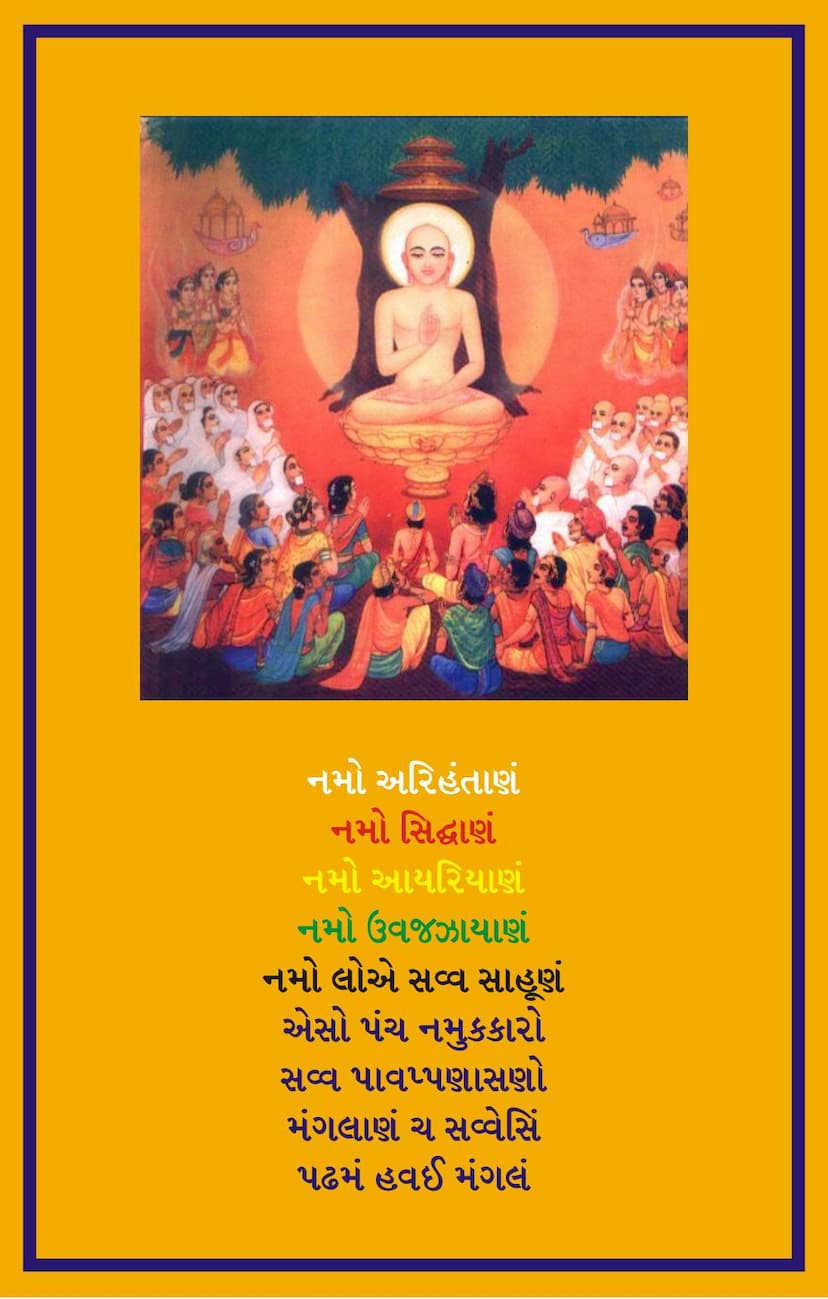Kalpsutra Part 01 Sthanakvasi
Added to library: September 2, 2025

Summary
Summary of Kalpasutra Part 01 (Sthanakvasi) by Ghasilal Maharaj
This Jain text, the Kalpasutra Part 01, authored by Ghasilal Maharaj and published by A B Shwetambar Sthanakvasi Jain Shastroddhar Samiti, serves as a foundational text for the Sthanakvasi Jain tradition. The provided catalog link points to a digitized version of the book, making its content accessible.
The initial pages (1-4) establish a devotional tone with the recital of the Navkar Mantra and greetings to prominent Jain Acharyas. They also highlight the publication project, crediting Acharya Shri Ghasilalji Maharaj and offering a detailed description of the book, including its Sanskrit and Prakrit commentary by Muni Shri Kanhaiyalalji Maharaj, and its Hindi-Gujarati translation. The publication details mention the generous contribution of Seth Shri Maneklal Amulkhray Mehta and the committee's gratitude.
The subsequent pages (5-13) delve into important guidelines for the study of the Kalpasutra, particularly focusing on the concept of Aswadhyaya (अस्वाध्याय). This section meticulously lists various situations or conditions that are considered inauspicious for the study of the original text (Mool Path). These include:
- Ten 'Aswadhyayas' related to the sky: These are phenomena like falling stars (Ulka-paat), directional burning (Digdah), thunderous clouds (Garjarav), celestial sounds (Nirghat), lightning (Vidyut), specific moonlight conditions (Yoopaka), celestial lights (Yakshadipata), and atmospheric phenomena like dark fog (Dhumika Krishna) and white fog (Mahika Shwet), and dust storms (Rajo-udghata).
- Ten 'Aswadhyayas' related to the physical body (Audarik Sharir): These involve the presence of burnt bones and flesh, soiled materials, visible excreta and urine, being in or near a cremation ground (Smashan), lunar or solar eclipses, royal disturbances (Rajavyudgata), royal or national deaths (Patan), and the presence of a dead body within or near the dwelling (Audarik Sharir).
- Eight days associated with festivals (Mahotsav) and their preceding days (Pratipada): Specific full moons and their subsequent first day of the dark fortnight are listed as days of Astra-dhyaya.
- Time-related restrictions: Studying during dawn (Ushakaal), twilight (Sandhyakal), midday (Madhyan), and midnight is discouraged for specific durations (two Ghadi - 48 minutes).
Crucially, the text clarifies that these Astra-dhyaya rules apply only to the original script and not to translations or commentaries in vernacular languages. It emphasizes the importance of Vinaya (विनय) and following the guidance of elders and Gurus in critical situations.
The index pages (12-48) provide a detailed breakdown of the Kalpasutra's content, categorized into:
- Sthavirakalpa (स्थविरकल्प): This section outlines various rules and principles for monks and nuns, covering their conduct, diet, clothing, shelter, fasts (tapas), and communal living regulations. It discusses concepts like Achēlikya (अचेलकित्व - nudity or minimal clothing), Audēshika (औदेशिक - food meant for a specific monk), Rajapinda (राजपिण्ड - food from royalty), Kritkarma (कृतिकर्म - rituals), Mahavratas (महाव्रत - great vows), Paryaya Jyeshtha (पर्यायज्येष्ठ - seniority by initiation), Pratikraman (प्रतिक्रमण - atonement), Masanivasa (मासनिवास - staying in one place for a month), and Paryushana (पर्युषण - the main festival). It also elaborates on the differences and adherence to these rules for monks (Sadhus) and nuns (Sadhvis), and touches upon the distinction between Jinakalpa (जिनकल्प - followed by Tirthankaras) and Sthavirakalpa (स्थविरकल्प - followed by subsequent monks). The text also introduces the concept of 'Rigajadya' (ऋजुजड - simple-minded) and 'Vakradadya' (वक्रजड - cunning-minded) disciples through illustrative stories.
- Nayasaradi Shadvimshati Bhavakatha (नयसारादिषड्विंशतिभवकथा): This extensive section details the 26 past lives of Lord Mahavir, tracing his spiritual journey from the time he attained true self-awareness (Atma-bhan) in the Nayasar era. It describes his experiences as a divine being in various heavens (Saudharma Kalpa, Brahma Loka, Ishan Devlok, Sanat Kumar Devlok, etc.), as well as his births in hellish realms and as emperors and kings. The narratives highlight the consequences of actions and the path towards liberation.
- Lord Mahavir's Birth Narrative: This part focuses on the lineage of Lord Mahavir, describing his conception, his mother Trishala's auspicious dreams, the naming ceremony, and the early life and upbringing of the Tirthankar.
The Kalpasutra, in this Sthanakvasi interpretation, is presented as a guide for spiritual practice, emphasizing adherence to strict discipline, ethical conduct, and the ultimate goal of liberation (Moksha). The detailed listing of Astra-dhyaya and other rules underscores the meticulous nature of Jain monasticism. The extensive Bhavakatha section provides a narrative framework for understanding karma and spiritual evolution, drawing lessons from the lives of past incarnations.